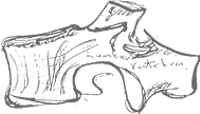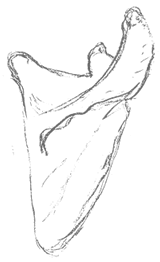|
Courses
- Courses In The
Alexander Technique
- Easter Holiday Workshop
- 3 Day Summer
Holiday Course
- 5 Day Summer
Holiday Course
- Accommodation For Courses
Cumbria Alexander Training Teacher Training Course
- AT Professional Qualification
with Self Discovery
- Description
- Prospectus
- Philosophy & Principles
- Course Dates & Times
Articles
- Pain Relief Through Learning
- Expansion
- Role Of Alexander
Technique In Back Care
- Are You Missing
Some Of Your "Up"?
- Alexander Technique
- Body Language
- Primary Control
- Manner of Use and
Condition of Use
- Coming Home
Lessons
- Lessons With
Michael Hardwicke Professional Development
- Living Alexander Anatomy
- The Dynamic Spine
Other Courses
- Walking &
Alexander Technique
- A.T. And The Office
- Fellside Alexander
Technique Course
- About FM Alexander
Links
- S.T.A.T.
- YogaPlus,
Crete for
good Yoga holidays
 |
|
 |
|
The Role of the Alexander Technique in Back
Care.
By Michael Hardwicke.

 The
Alexander Technique has a great deal to say about the care of your back.
Its primary message is that your spine is your essential support structure.
All your functioning depends on this structure performing its role in
an elastic, natural way. You learn how to release the muscles of your
spine and go about your tasks in ways which don't just allow your spine
to work well but actually enhances it's role. Back care is more than just
knowing how to bend and sit well. These things are important but unless
the structure that does the bending and sitting is set up with released
and naturally toned muscle, bending and sitting can still lead to discomfort
and strain. The
Alexander Technique has a great deal to say about the care of your back.
Its primary message is that your spine is your essential support structure.
All your functioning depends on this structure performing its role in
an elastic, natural way. You learn how to release the muscles of your
spine and go about your tasks in ways which don't just allow your spine
to work well but actually enhances it's role. Back care is more than just
knowing how to bend and sit well. These things are important but unless
the structure that does the bending and sitting is set up with released
and naturally toned muscle, bending and sitting can still lead to discomfort
and strain.
The Alexander Technique teaches that your spine supports you and your
legs, arms etc. provide movement. It teaches you how to get the muscles
that run down the length of your spine (extensor muscles) released and
able to act with good tone in them. These muscles keep you upright in
a natural, elastic way and this uprightness is possible with a great deal
less effort than most people imagine. This allows your arms, legs and
the front of your structure to move more freely without trying to support
you. Set up likes this then you can move with much less strain.
 When
you come to bend and sit you need to be clear about the job of the hip
joint and knee so the whole spine can continue to support you in these
activities. When you have this understanding, bending in this sort of
way actually strengthens your back extensor muscles. So you are not just
avoiding problems but enhancing body use. When
you come to bend and sit you need to be clear about the job of the hip
joint and knee so the whole spine can continue to support you in these
activities. When you have this understanding, bending in this sort of
way actually strengthens your back extensor muscles. So you are not just
avoiding problems but enhancing body use.
In the Alexander Technique you learn to let your spine's natural ability
to keep you upright work in an easier way, so that good back care can
start before you begin to move. This ease in being upright has evolved
over millions of years so that your back is under much less strain when
you do use it. The Alexander Technique places great emphasis on this natural
state of poise. 'Poise' well describes the ability to be ready to act
with efficiency and without unnecessary muscular effort. So you begin
to achieve good back care by learning from the Alexander Technique both
the 'getting ready' to act as well as the 'how' to act.

Top of Page
 |
| |
Michael Hardwicke
Tel: 015395 31781
E-mail: michael@fmalexandertechnique.co.uk
|
|
Newton Farm Cottage
Newton-in-Cartmel
Grange-over-Sands
Cumbria, LA11 6JJ
|
 © Copyright 2004 - 2014 Michael Hardwicke
© Copyright 2004 - 2014 Michael Hardwicke |
|
|
 |
 F.
M. Alexander Technique
F.
M. Alexander Technique F.
M. Alexander Technique
F.
M. Alexander Technique